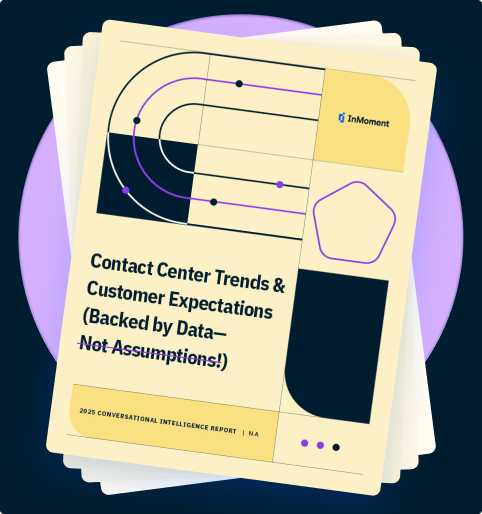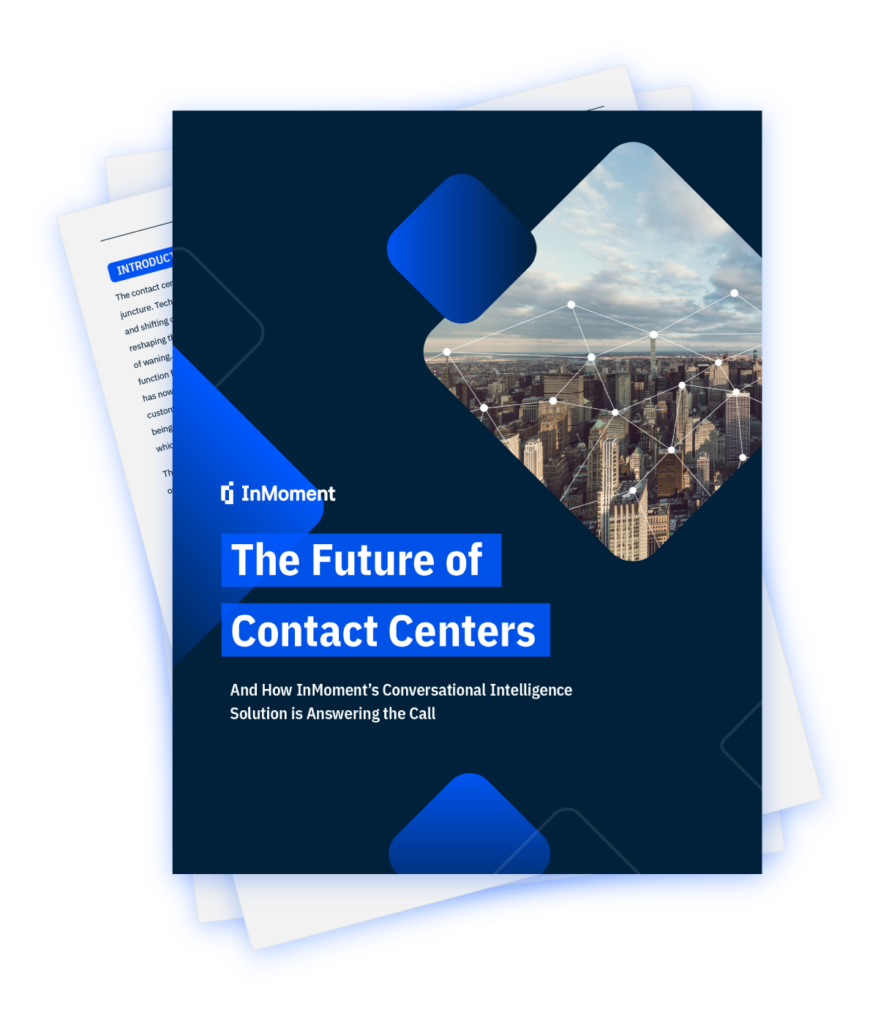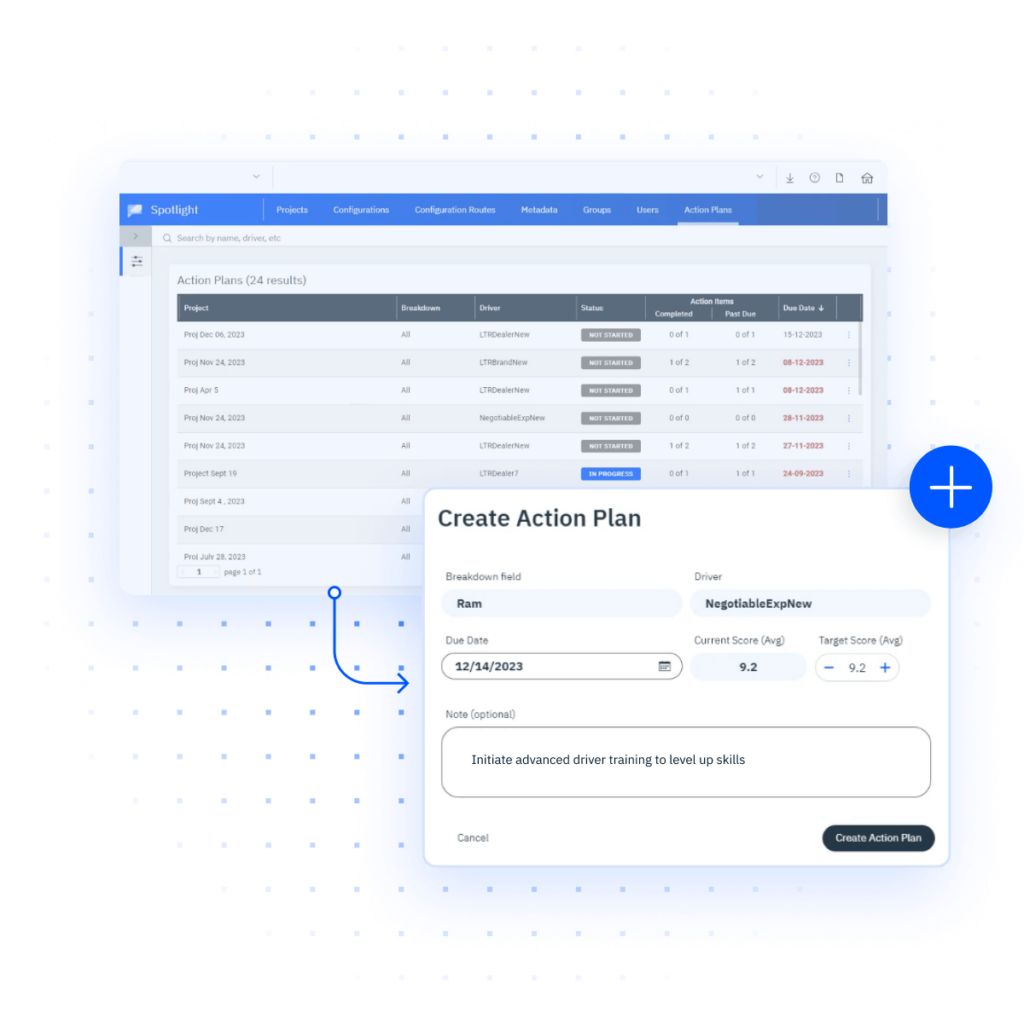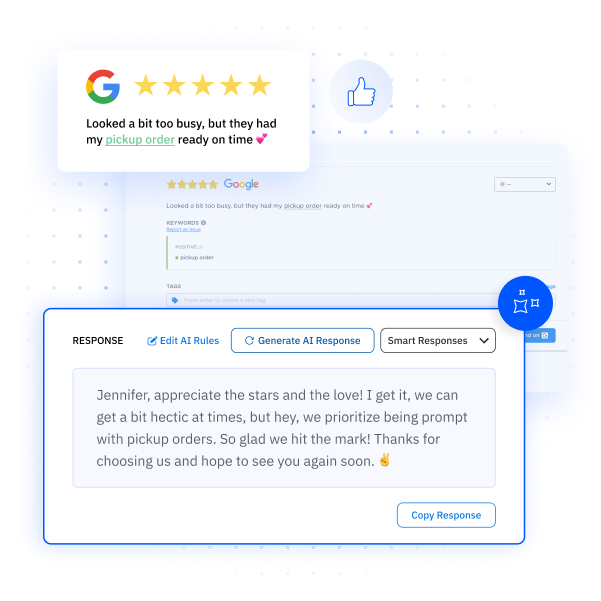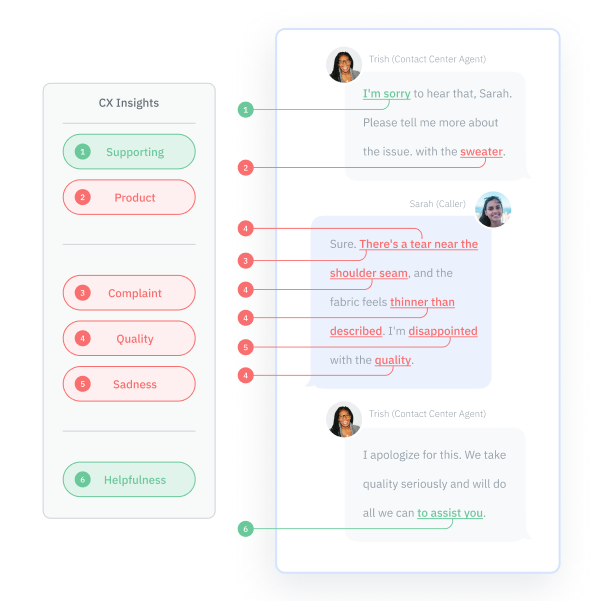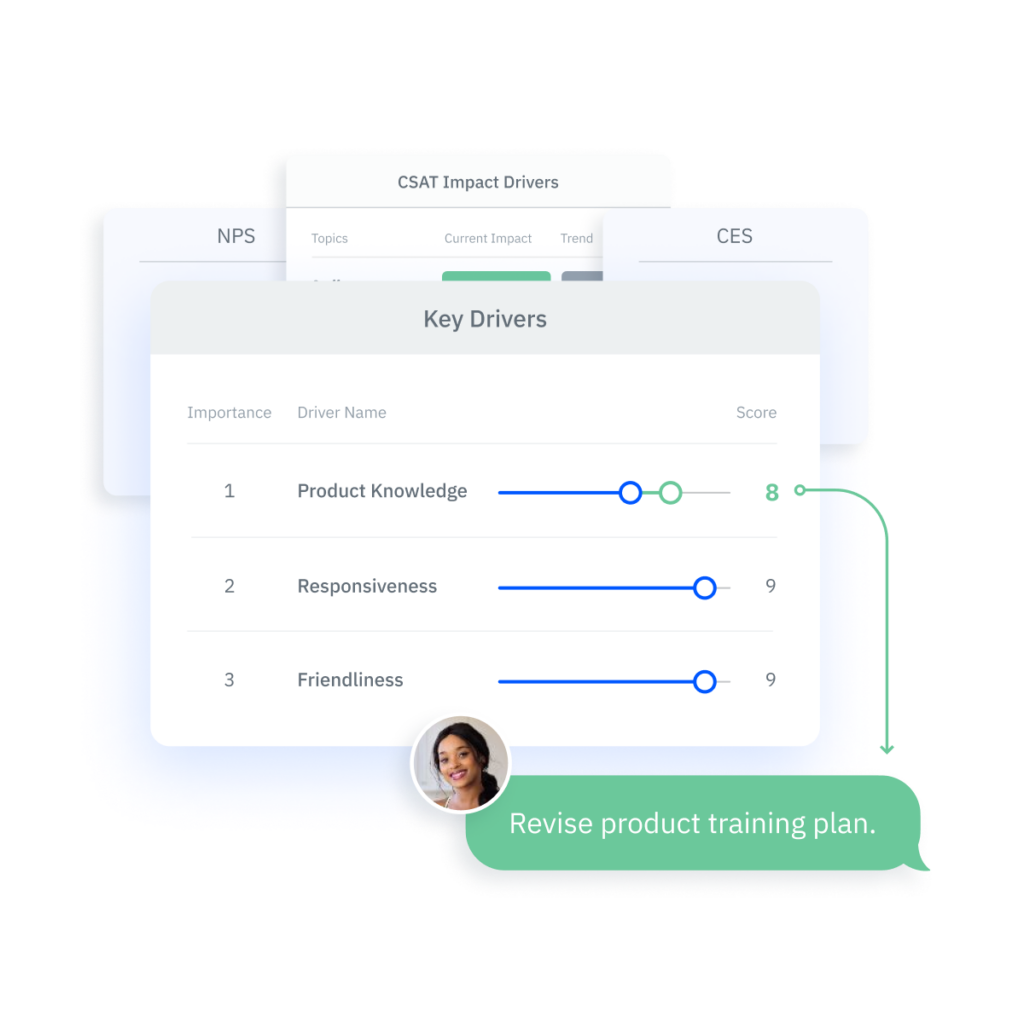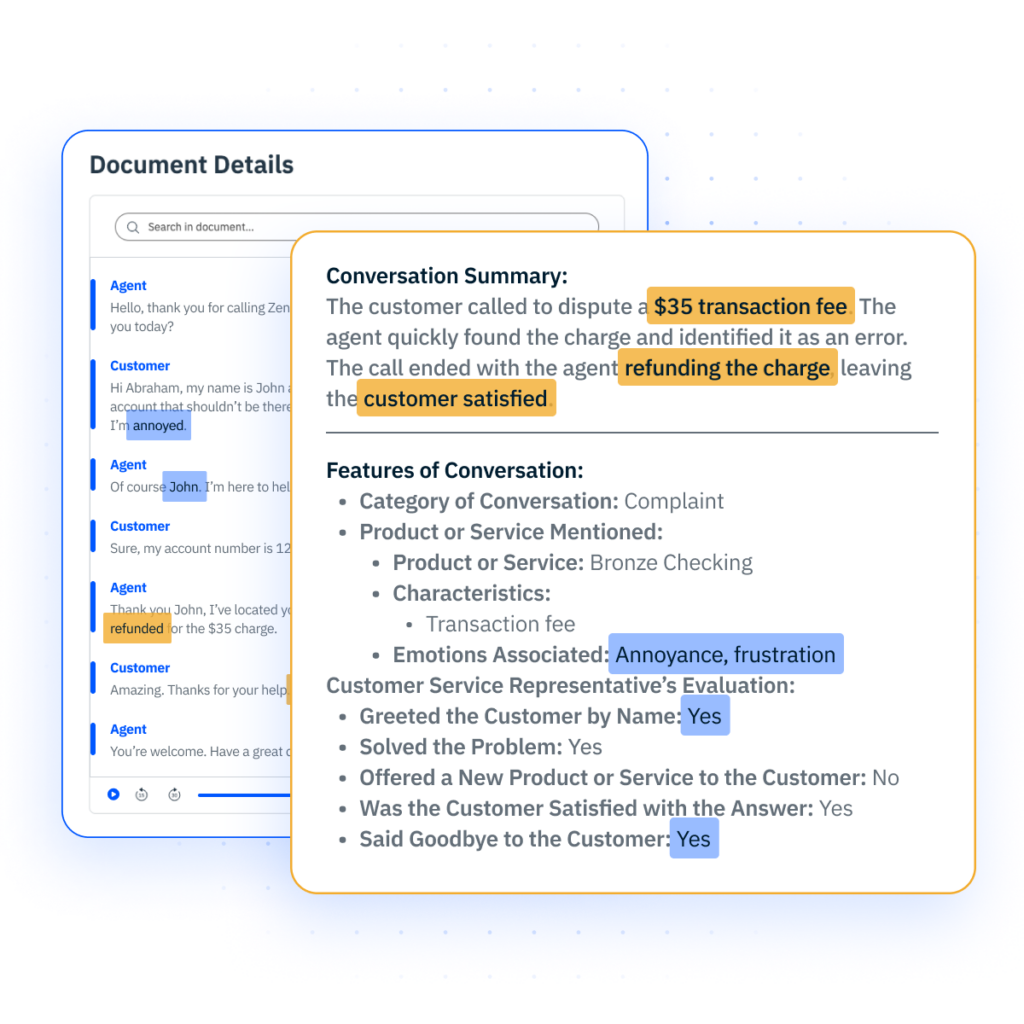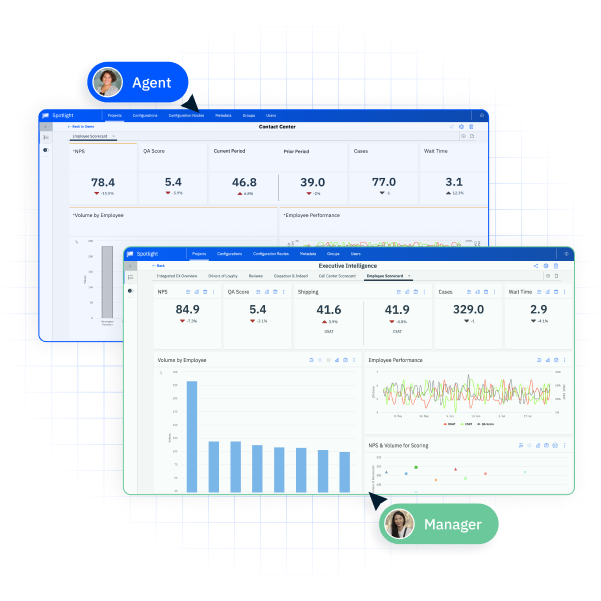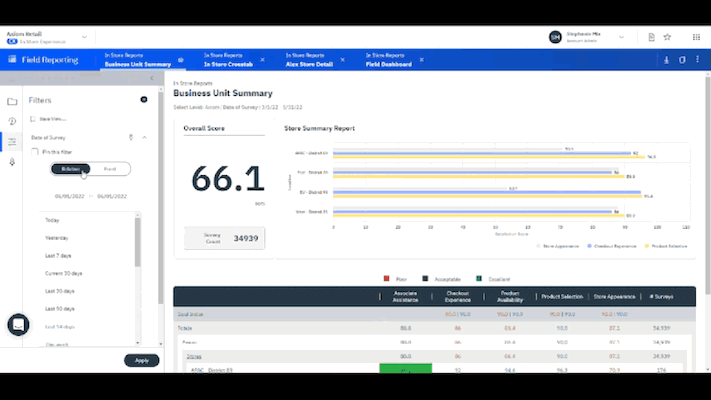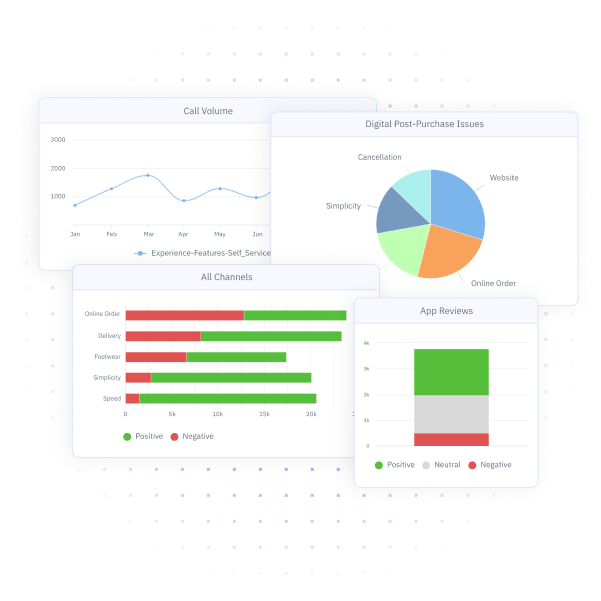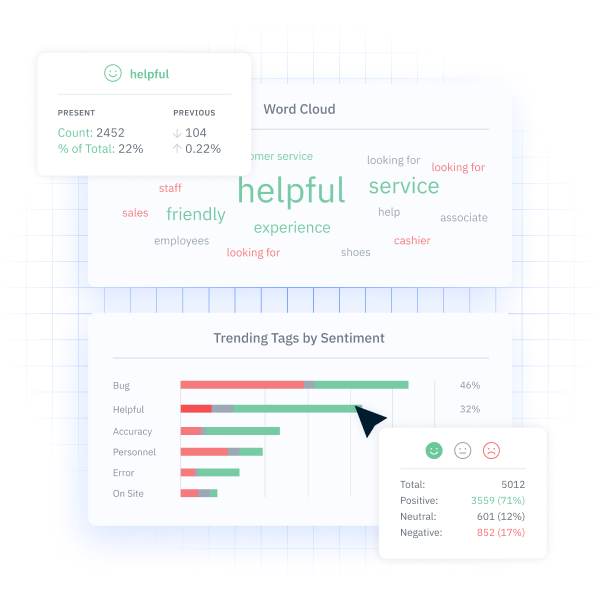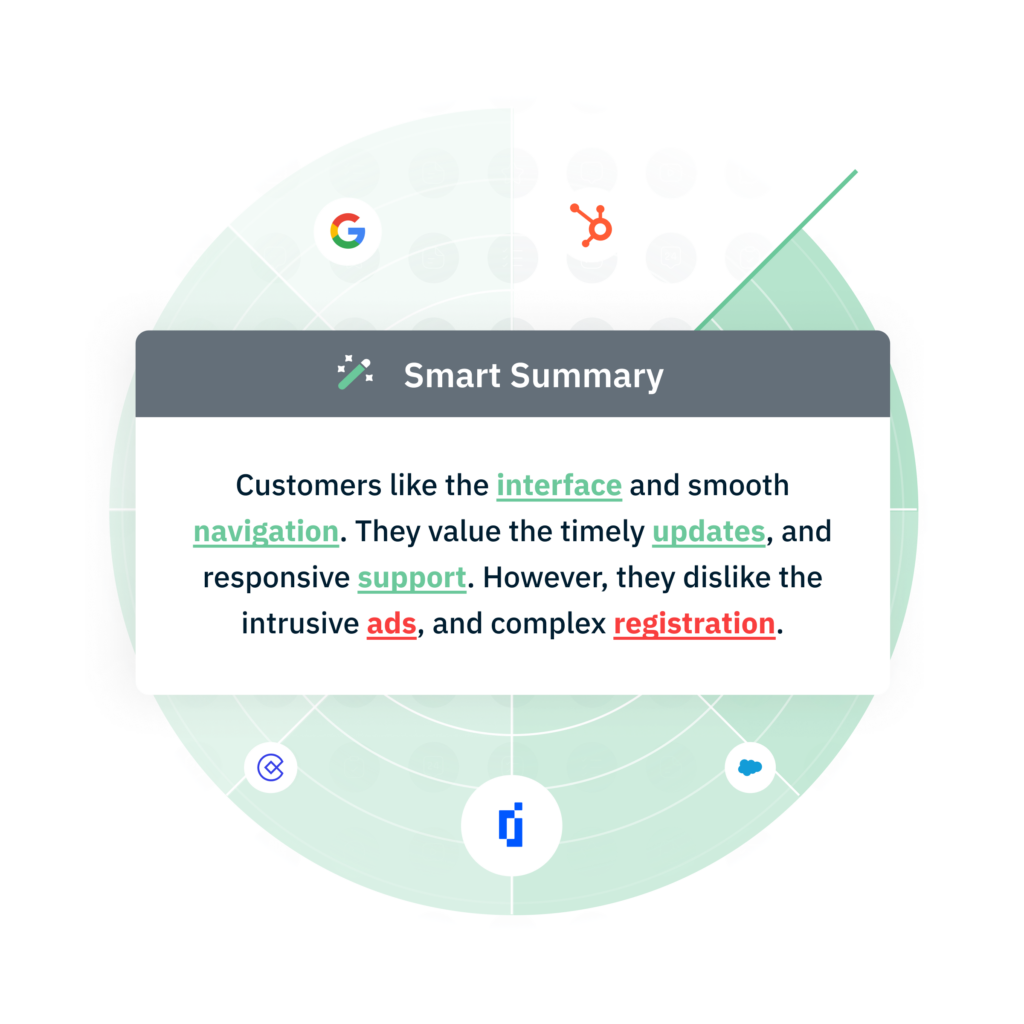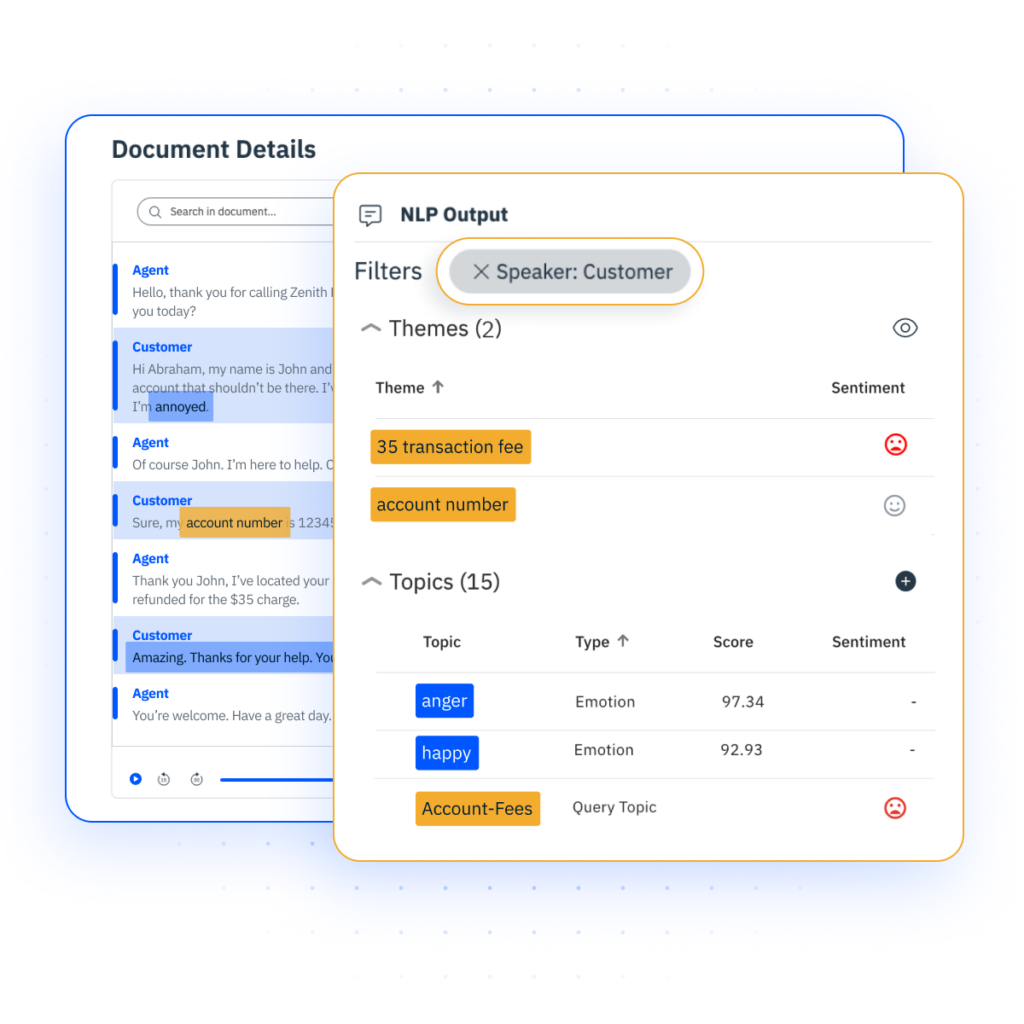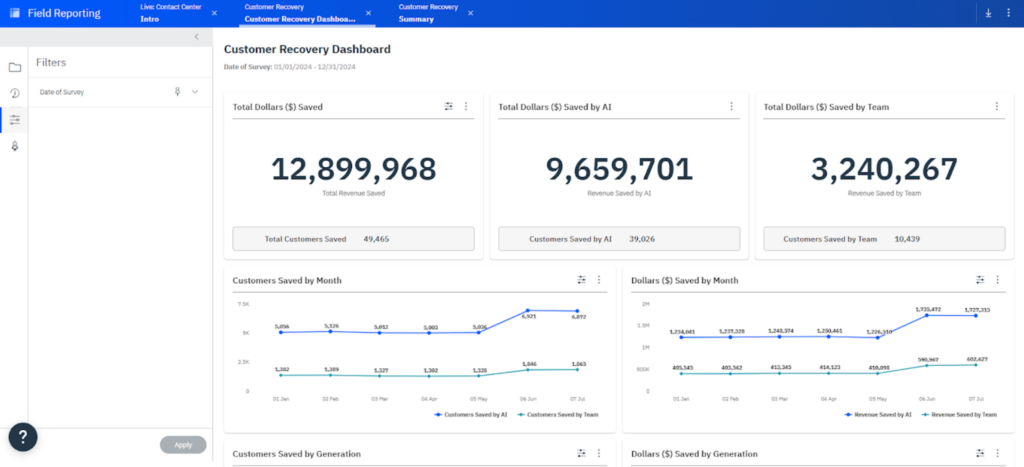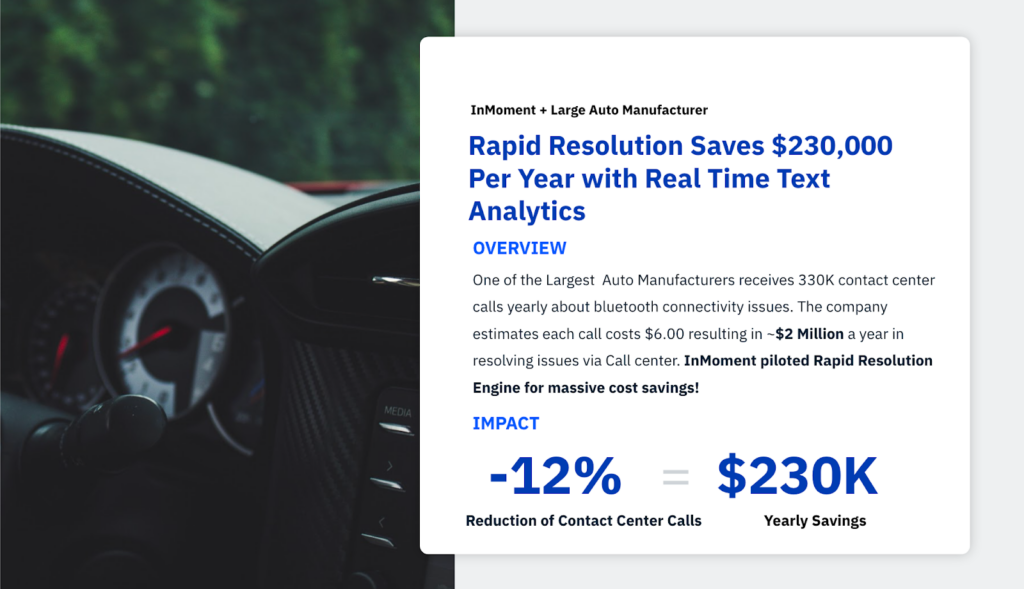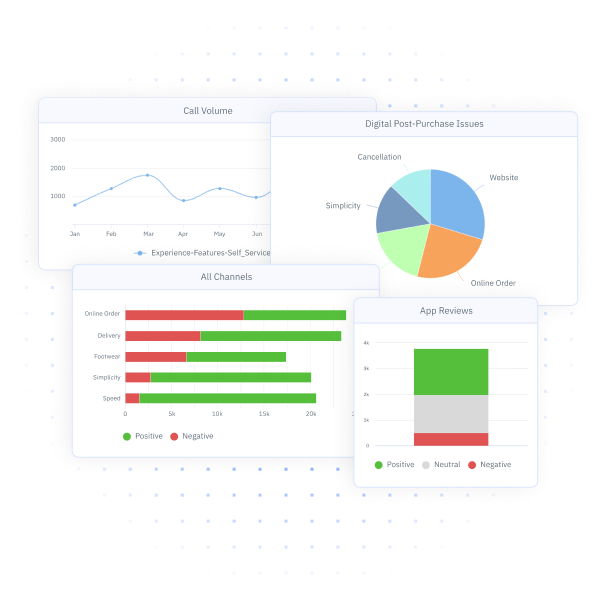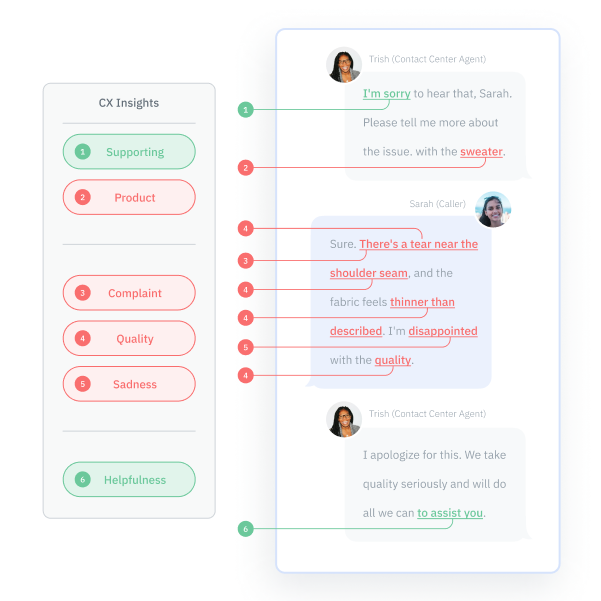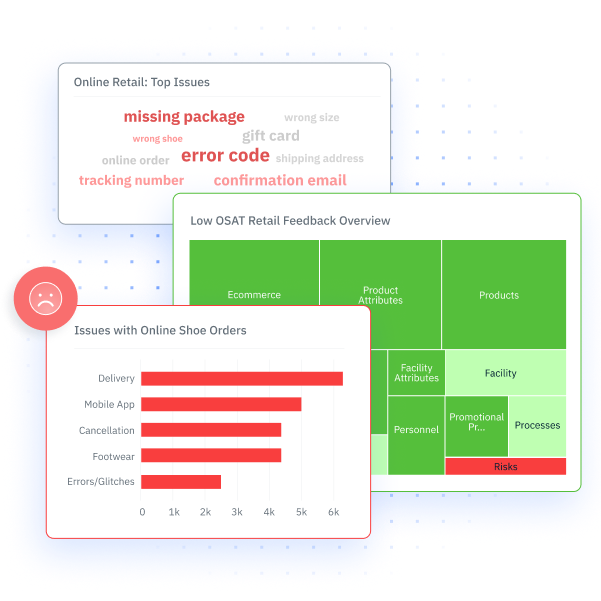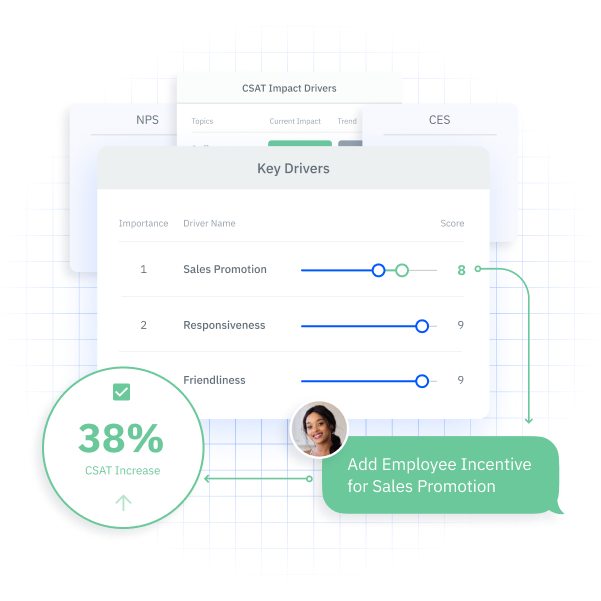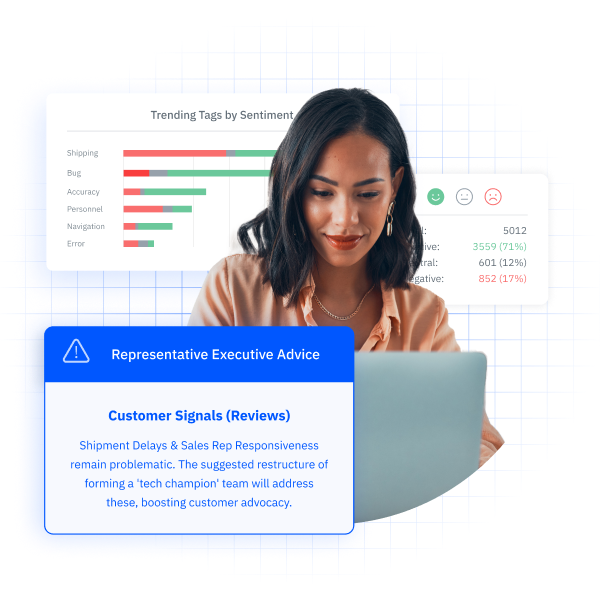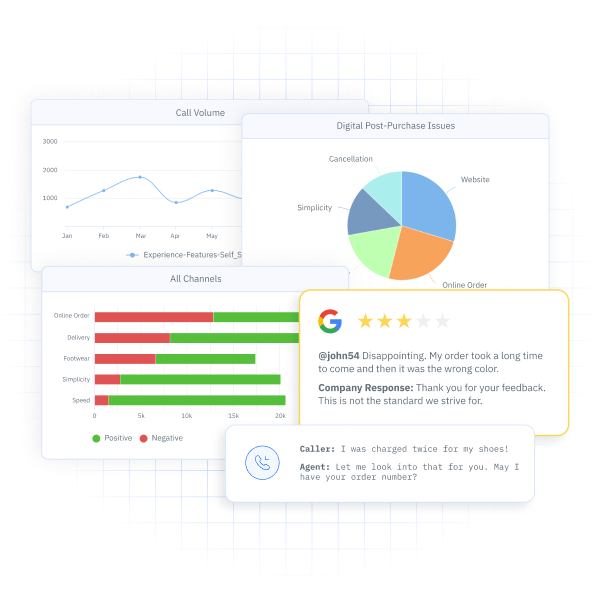A Guide to Contact Center Analytics: Improving Customer Satisfaction and Operational Efficiency
Contact center analytics represent the gathering and reporting of customer data. By utilizing this data, businesses can improve the customer experience.
If your business operates a contact center as a part of its customer support or customer success strategy, chances are you’re in a constant quest for improvement. There’s always room to make customer interactions more efficient and more successful, and the effort is almost always worth it: any positive change accomplishes cost savings, better customer relationships, or both.
The trick is determining what needs to change, along with which changes will deliver the most benefit. For most call centers, the answer is right in front of them—it just needs to be untangled.
Contact centers handle high volumes of customer feedback across multiple channels. And with effective contact center analytics practices, customer feedback can be the roadmap to happier customers and efficient operations.
What Are Contact Center Analytics?
Contact center analytics is the end-to-end process of collecting, measuring, analyzing, and implementing data generated during customer interactions. Businesses can collect this data from multiple sources, including phone calls, emails, online chats (both virtual and human), and social media interactions.
Using contact center analytics, businesses can leverage this data to better understand many facets of customer interactions and the contact center’s operations. Businesses can use analytics data to track key customer experience KPIs, understand customer sentiment, identify recurring issues, and train and coach staff.
Types of Contact Center Analytics
Contact centers can generate many different types of analytics. These are seven of the most important analytics categories for most call center operations.
Conversational Analytics
First up and perhaps most important is conversational analytics. Contact centers generate tons of unstructured data: text-based conversations and call recordings are rich with information, but this information is extremely difficult to get using older analytics methods.
Conversational analytics is a newer approach that leverages the power of natural language processing (NLP) and machine learning to analyze threaded conversations between agents and customers. This form of analytics can identify numerous elements within conversations, including sentiment, patterns in questions asked or complaints received, accuracy of agent responses, and more.
Through conversational analytics, businesses can improve their call center interactions by identifying what does and doesn’t get the desired response, at scale. They can also identify recurring issues and complaints, which can help product and service teams solve relevant customer experience difficulties—which can even lead to reduced call volume.
Text Analytics
Text analytics processes numerous forms of written communication, such as emails and chat messages, looking for patterns in those communications (such as frequently mentioned problems or products). It’s similar to conversational analytics but with less focus on sentiment.
The goal of text analytics is to pull actionable insights out of unstructured data, identifying issues or methods of improvement that aren’t otherwise obvious.
Thanks to the power and accuracy of modern transcription tools, businesses can perform text analytics on audio content by converting audio to text, and then plugging it into text analytics like any other text source.
Predictive Analytics
Predictive analytics evaluates historical data, such as performance data or sales trends, and uses it to make predictions about future events. Contact centers can use predictive analytics to understand likely spikes in call volume related to seasonality, product launches, or other factors.
Key Driver Analytics
Key driver analytics looks at the biggest factors that drive behavior. What data points or performance metrics tend to result in the behaviors you want from stakeholders (loyalty, retention, conversion), and what data points or events tend to lead to undesirable behaviors (churn, poor reviews, returns)?
By identifying and then analyzing the data points that drive customer behavior, businesses can better prioritize where to focus and determine how to push more consumers toward desired behaviors (and away from undesirable behaviors).
Customer Journey Insights
Many businesses, especially those with long-term customer relationships such as software/SaaS, put concerted effort into understanding the customer journey. This concept recognizes that many customer relationships are much more complex than convincing a consumer to buy something in a single moment in time.
Customer relationships ideally go on for long stretches of time (that’s the “journey” element), and customers may relate to the company differently along that journey.
Customer journey insights help organizations understand what happens along that customer journey. These insights help businesses find problems and weak points in the customer journey, such as points where churn is unusually high. They also help to break down silos, identify voice-of-the-customer gaps (VoC gaps), and measure opportunities for improving the overall customer experience.
Sentiment Analytics
Related to conversational analytics, sentiment analysis finds indicators of how a customer is feeling during a text or voice interaction. Evaluating customer emotions and opinions can help businesses understand what’s causing positive and negative reactions at scale. This is a key tool for understanding and improving brand perception, as well as for identifying the solvable issues underlying negative sentiment.
Cross-Channel Analytics
Businesses interact with customers and prospects across numerous customer support and marketing channels, and it’s easy for this data to get siloed or obscured. Data often comes in different formats, and cleaning this up into something useful can be time-consuming and difficult.
Cross-channel analytics provides a unified view of customer interactions across multiple communication platforms. The best contact center solutions employ machine learning algorithms to pull disparate data sets together without significant manual work or formatting. This generates seamless insights that give businesses a clear view of how customers are responding across all channels.
What Are Important Metrics in Contact Center Analytics?
In today’s customer-centric business landscape, contact center analytics play a pivotal role in understanding and improving customer interactions.
By focusing on these key metrics, organizations can gain valuable insights into the efficiency and effectiveness of their contact center operations.
Here are some of the most important metrics in call center analytics that contribute to enhancing overall customer experience and operational performance:
- Call center performance metrics: Call center performance metrics are critical for assessing and enhancing the efficiency and effectiveness of call center operations. Key metrics like Average Handle Time (AHT), First Call Resolution (FCR), and Service Level provide insights into agent performance, operational efficiency, and customer satisfaction.
By continuously monitoring and optimizing these metrics, businesses can improve service quality, boost customer loyalty, and drive overall success.
- Agent performance metrics: Behind every successful contact center are the agents who shape the customer journey. Tracking their performance is essential. Analytics provide insights into response times and resolution rates, enabling targeted training and personalized feedback.
- Customer experience metrics: Businesses measure a contact center’s effectiveness by the experiences it creates. These customer experiences are the currency of success in today’s customer-centric world.
By focusing on metrics like Customer Satisfaction Score (CSAT), Net Promoter Score (NPS), and Customer Effort Score (CES), businesses can understand and address customer needs. Continuously refining these metrics allows businesses to create experiences that delight customers.
Why Are Contact Center Analytics Important?
Contact center analytics are one of the most important ways to improve because they can help to identify unique avenues for improvement. No other method can find patterns and anomalies that are otherwise hidden in your call center data.
Using contact center analytics, organizational leaders can:
- Optimize customer interactions by identifying tactics that work
- Improve operational efficiency by identifying areas of waste
- Drive data-informed decisions by arming decision-makers with clearer insights
All of these enhance customer satisfaction and improve business outcomes—and it’s all thanks to the data your contact center already collects, now made useful through analytics.
The Benefits of Contact Center Analytics
Implementing contact center analytics will reap multiple benefits for your organization. Not only will these benefits help with contact center optimization, but they also aid in optimizing the entire business process. Here are some of the benefits you can expect from utilizing contact center analytics:
- Increased Efficiency: Analytics streamline processes, reduce wait times, and ensure customer inquiries are handled promptly and efficiently.
- Cost Savings: Organizations can achieve significant cost savings by optimizing staffing levels, implementing self-service options, and leveraging automation.
- Improved Agent Productivity: Providing agents with the necessary tools, training, and technology enhances productivity, reduces handling times, and improves customer service.
- Enhanced Scalability: Optimized contact centers can more effectively handle fluctuations in call volumes, seasonal variations, and unexpected surges in customer inquiries.
- Competitive Advantage: Superior customer service, driven by analytics, can differentiate organizations in the market and increase customer loyalty.
Challenges of Contact Center Analytics
Analytics can be the key to unlocking new levels of performance and customer satisfaction, but these outcomes aren’t automatic. Contact centers face certain challenges in getting the most out of their analytics.
- Data Overload: Without the right analytics tools, you may end up with too much of a good thing (data) and not enough capacity to work with it.
- Integration of Multiple Data Sources: Data comes from numerous sources, each with its own quirks with formatting and presentation. Plus, contact centers deal with tons of unstructured data, which is especially difficult to integrate.
- Lack of Real-Time Insights: Some analytics approaches are great at scrutinizing what’s happened in the past, but not what’s happening right now. They can’t process data in real time or provide up-to-the-minute insights.
- Lack of Skilled Personnel: Working with data requires a technical skill set for which there’s a significant talent shortage. However, choosing the right contact center tools can ease this challenge.
How Contact Center Analytics Shape the Future of Customer Experience
Organizations can use data from contact center analytics to enhance the customer experience. By providing insights into customer interactions, and identifying patterns and trends, these insights can uncover areas for improvement.
With call data, customer feedback, and agent performance, businesses can increase personalization, improve multi-channel communication, and address issues proactively, leading to increased customer satisfaction and loyalty.
Creating Personalized Customer Journeys
In a world teeming with generic interactions, personalized experiences stand out. Contact center analytics serves as the bridge between businesses and their customers, decoding the myriad signals that customers send out. By diving deep into these signals, businesses can craft journeys that resonate with individual customer personas.
It’s not just about addressing needs; it’s about anticipating them, understanding the unspoken desires, and weaving experiences that are as unique as fingerprints. Personalization, powered by analytics, transforms customers from mere statistics to cherished partners in a shared journey.
And, as we always emphasize at InMoment, when businesses take the time to truly know their customers, they unlock the potential to create moments that linger long after the interaction ends.
Enhanced Multi-Channel Communication
The digital age has ushered in a plethora of communication channels, from social media to chatbots. But how does a business discern which channel resonates most with its audience?
Enter analytics.
By meticulously analyzing customer interactions across various touchpoints, businesses can discern patterns, preferences, and propensities. This knowledge empowers them to streamline their communication strategies, ensuring that every message is not just heard, but felt.
InMoment champions the cause of meaningful communication, and with the insights from contact center analytics, businesses can ensure that every conversation is a step towards building lasting relationships.
Solving Problems Proactively Before They Arise
The future of customer experience lies in anticipation. Predictive analytics, with its ability to sift through vast data sets and discern patterns, offers businesses a crystal ball. Instead of merely reacting to issues, businesses can now proactively address them, often even before the customer is aware.
This shift from reactive to proactive problem-solving is transformative. It signifies a business that doesn’t just listen but understands, one that values its customers enough to stay a step ahead, ensuring smooth and delightful experiences.
At InMoment, we’ve always believed in the power of foresight, and with predictive analytics, businesses can turn insights into foresight, crafting a future where every customer feels valued, understood, and cherished.
How To Use Analytics To Improve Your Contact Center: 6 Best Practices
Whether you’re just beginning your analytics journey or are seeking to make your analytics more useful and effective, these 6 best practices will help your contact center improve.
1. Define Clear Objectives
Start by establishing specific, measurable goals for what you want to achieve with analytics. Perhaps your main objective is to improve customer satisfaction or reduce average handle time. Maybe it’s reducing churn or increasing the number of cases solved on first contact. Whatever your objectives, defining them is the first step toward using analytics software to achieve specific business outcomes.
2. Leverage Contact Center Analytics Software
Second, to get the most out of your analytics, you need analytics software that was built with contact centers in view. The way your business or business unit operates has unique concerns, and you need software that focuses on those concerns, not just on general business analytics.
Contact center analytics software also helps reduce the need for highly skilled technical employees, as the software does much of the work for you.
3. Integrate Multiple Data Sources
You have access to data from a wide range of channels. Taken together, this data can provide a comprehensive view of both customer behavior and contact center performance. The best analytics software solutions can do much of this work automatically, reducing your reliance on manual data entry and aggregation.
Contact centers that don’t centralize these efforts risk missing out on insights from some data sources. They may also fail to fully understand the big picture, and they risk getting left behind by competitors who have these insights.
4. Regularly Review and Update Metrics
To succeed in your contact center analytics journey, you need to review the data and metrics you receive regularly. Continuously checking the validity of your data helps ensure its accuracy and relevance, enabling you to make informed decisions based on reliable insights. This practice not only enhances the quality of your analysis but also allows you to promptly identify and address any discrepancies or anomalies.
5. Invest in Training
Ensure your staff is well-trained in using analytics tools and interpreting data to make informed decisions. This involves providing comprehensive training programs that cover the functionalities of the analytics software and the principles of data analysis and interpretation.
Regular workshops, hands-on training sessions, and continuous learning opportunities can keep your team updated on the latest analytics techniques and tools.
By empowering your staff with these skills, you enable them to leverage data effectively to optimize processes, enhance customer engagement and experiences, and drive business growth.
Features To Look for in Contact Center Analytics Software
Contact center analytics software is crucial for getting the best insights from your customer data. It can take different forms: Some solutions may be very structured, while others may be lighter in implementation and only used for specific use cases, such as exporting reports.
Regardless, there are some key features you need to consider in your contact center analytics solution, including:
Multi-Channel Integration
First, be sure to choose a solution that allows you to aggregate data from various communication channels, including phone, email, chat, and social media reviews.
Without this capability, you’re essentially working on a puzzle with half the pieces missing. Or, worse, you’re dealing with a dozen different puzzles all suggesting slightly different things, and you’re stuck trying to figure out what to make of it all. Only with multi-channel integration can you sort it all out into one cohesive picture.
Performance Monitoring and Reporting Capabilities
Being able to capture data is one key facet of effective analytics, but there’s more to the story. You’ll also need effective tools to monitor performance and a way to present analytics digestibly.
With these, you’ll be able to better identify changes in performance (both good and bad) and more easily identify the most critical insights. Effective data visualization techniques (such as charts, graphs, and heatmaps) highlight key metrics and trends, allowing decision-makers to grasp the most essential information quickly.
Speech and Text Analytics
Manually reviewing all the data running through your contact center may be nearly or entirely impossible, so choose a solution that uses speech analytics and text analytics to automate the process of data extraction and analysis.
Speech analytics can automatically transcribe and analyze phone conversations, capturing key phrases, sentiments, and emotional cues that provide deep insights into customer experiences and agent performance. Similarly, text analytics can process written communications, such as emails, chat transcripts, and social media interactions, to identify common themes, sentiments, and emerging issues.
By leveraging these advanced analytics tools, you can efficiently sift through vast amounts of data to uncover critical patterns and trends without manual intervention.
Predictive Analytics
Furthermore, ensure your chosen contact center analytics software has predictive analytics capabilities. Predictive analytics leverages historical data and advanced algorithms to forecast outcomes, such as call volumes, customer satisfaction levels, and agent performance.
By providing these insights, the software enables you to make data-driven decisions that improve resource allocation, enhance customer service strategies, and optimize overall contact center operations.
Professional Services and Support
Contact center analytics is a complex business function, and the software supporting it often doesn’t work as an entirely DIY or self-service solution. So look for software providers who also offer professional services and support for their contact center analytics tools.
InMoment is a leader in professional services and support. We become a true strategic partner with our clients, not just another vendor. Our unparalleled professional services and support are flexible and customizable depending on your needs.
We employ product specialists, data scientists, and advanced-degree researchers so that we can support our customers with high-level professional services, including (but not limited to):
- Program administration
- Proactive best-practice guidance
- Ad-hoc research initiatives
Customizable Dashboards
Contact centers don’t all universally prioritize the same analytics elements, so make sure to choose a solution that allows you to customize your dashboards to fit the way you want to interact with your data.
By choosing a solution with a user-friendly interface that allows you to customize dashboards and tailor reports, you’ll gain better visibility into your operations.
Centralize Your Contact Center Analytics With InMoment
Contact center analytics can transform what’s possible at your organization in terms of operational efficiency, customer satisfaction, and numerous other priorities and growth metrics.
But to see results that are truly transformative, you need a contact center analytics platform with the right set of technical capabilities and features. You need a partner that enables you to draw insights from your data rather than spend all your resources wrangling it.
InMoment’s conversation analytics software allows businesses to use structured and unstructured customer feedback to make the most informed decisions about their business.
Schedule a demo today to see what insights you can unlock!
